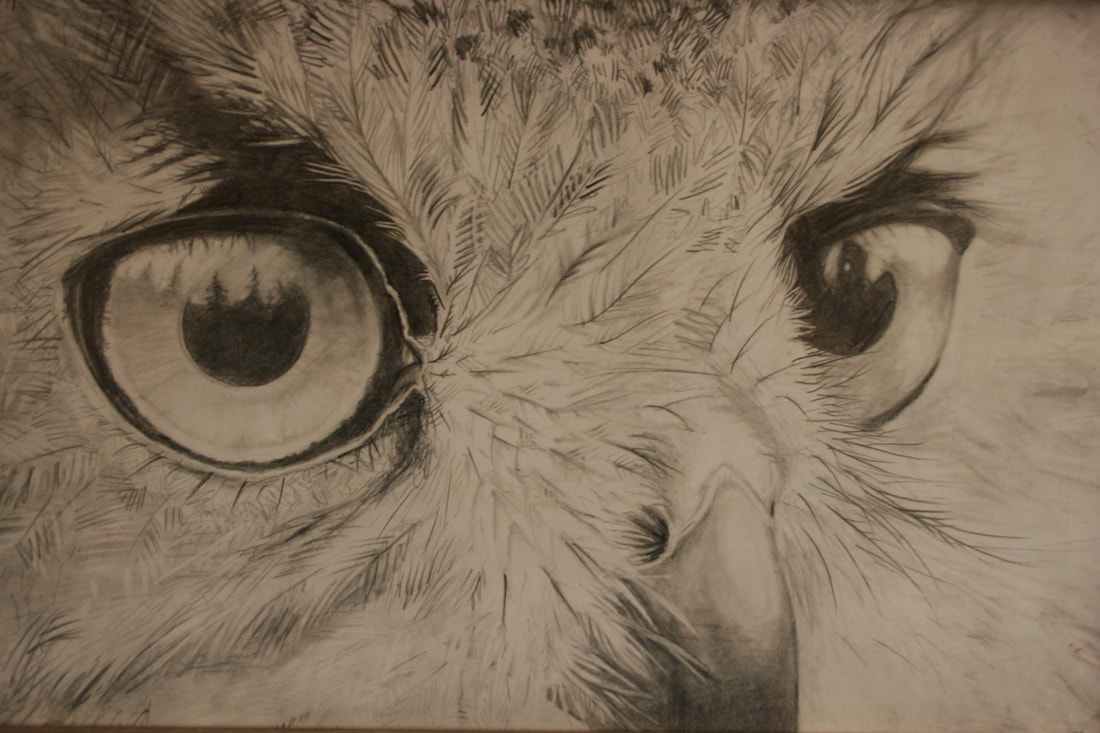|
By Janelle Eklund
August 28 and summer has that fading look about it. There are still lots of green leaves but as I look out my window I see signs of fall in green aspen leaves fringed in yellow and brown. One branch of a balsam poplar sports yellow leaves while others still hang on to summer green. On my walk this morning spruce cones were raining out of the top of its tree where a squirrel was chattering and diligently preparing for the changing season. One nearly missed my head! Fireweed has turned to cotton and its leaves to a brilliant fire red. I notice only a few flower heads hanging on to the season: yarrow, a lupine here and there with faded blue petals, and Siberian Aster. Siberian Aster is quite common throughout the area and often found in the boreal forest and gravelly areas. Its pretty yellow face is surrounded by an array of violet petals. Each head usually stands alone on a stem. Its stems are securely anchored by creeping rhizomes under the surface of the earth. The flowers seem to linger on as summer wanes. Leaves carry many brilliant colors throughout their life cycle. In the spring and summer they are producing chlorophyll which makes them green. Throughout the summer this chlorophyll helps the tree gather nourishment for the dark times of the year. As the light of each day gets shorter the plants take the clue and stops producing chlorophyll. Once the green starts to fade away other colors that were hidden behind the green start to emerge. Reds, oranges, yellows, and browns all move to the forefront as if to give a beautiful epitaph to summers labors. Food that is trapped in the leaves give off the various red colors. Wastes from the leaves give off the brown colors. The more dry and sunny the late summer, the more brilliant the colors. Cloudy fall days and warm nights produce more drab colors. As we say goodbye to another summer season plants morph into releasing the fruits of their labor. Bright red/orange rosehips filled with vitamin C are ready for the picking. Berry plants have moved from flower stage to berry stage and sunny fall days urge me to do something about my berry picking addiction. Even though I gave into it and we have already picked four and a half gallons of blueberries, the urge is still there. I think it was engrained in me as a child when my dad took us huckleberry picking. We couldn't leave until our 3 lb coffee cans were full. It's not just the picking that is addictive - it's the pure joy of experiencing the beauty of the tundra, its fall odors, its sweet tastes, the cool air warmed by the sun, walking, canoeing, the sight and sounds of migrating birds, glassing the tundra for caribou and moose, taking a nap on the soft tundra, listening to the silence, and gathering the light and essence of it all to tuck away for winter dreams. From my light to yours- References: Flora of Alaska and Neighboring Territories by Erick Hultén; http://www.sciencemadesimple.com/leaves.html
0 Comments
By Janelle Eklund
It was mid to late summer and as we walked through the Boreal Forest new plants sprung from the forest floor. Clusters of purple flowers crowded the top of a long stemmed wild Delphinium. Each flower looked like it was wearing a bonnet with wings and a spike on top. At the mouth (center) of each flower the purple color morphed into white and looked like two white front teeth. Little white hairs spilled out of the mouth, accented by a purple background of petals. The leaves of the plant spread in a fan, each segment ending in sharp looking arrowhead type points. Larkspur is a poisonous alkaloid plant and if ingested can cause upset stomach, nervousness, and depression. If eaten in large amounts it can even cause suffocation and death. As the plant matures the toxicity lessens but it is still poisonous. I haven't found this plant to be too prolific in this area but maybe my wanderings just haven't been in the right places. In the places that it does live it can become very prolific after a fire, tree clearing or overgrazing. Domestic delphiniums can get very tall and create a beautiful backdrop for a flower garden. Enjoy the last vestiges of blooming plant life as summer fades into fall. From my light to yours- References: Plants of the Western Boreal Forest & Aspen Parkland by Johnson, Kershaw, MacKinnon, Pojar; Flora of Alaska and Neighboring Territories By Eric Hultén. |
Who We AreWISEfriends are several writers connected with Wrangell Institute for Science and Environment, a nonprofit organization located in Alaska's Copper River Valley. Most of these articles originally appeared in our local newspaper, the Copper River Record. Archives
August 2021
Categories
All
|
|
WISE is a
501(c)3 nonprofit organization |
Contact Us |


 RSS Feed
RSS Feed
